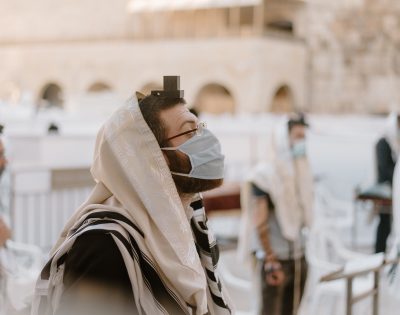×


We have detected your country as:
Please click here to go to the USA website or select another country from the dropdown list.
by: Nathan Williams, Director of Marketing and Communications
 From the window at Christ Church Guest House, I watched the ancient sandstone streets swell at all times of the day and night as pilgrims went about celebrating Sukkot (Feast of Tabernacles). Just like the Jerusalem conjured in my imagination—a city lost in time, an eternal city, untouched by the winds of modernity—my first stay in the Old City brought this vision to life. From sitting in the oldest Protestant Church in the Middle East to wandering through the Arab shuk (market) and discovering the narrow, winding streets of the four quarters, staying in the Old City was like being transported back in time. In reality though, the Old City is only a part of the real Jerusalem. Outside the walls, Jerusalem is bursting at the seams, and the Jerusalem emerging from the construction and infrastructure boom may look different than we have ever imagined.
From the window at Christ Church Guest House, I watched the ancient sandstone streets swell at all times of the day and night as pilgrims went about celebrating Sukkot (Feast of Tabernacles). Just like the Jerusalem conjured in my imagination—a city lost in time, an eternal city, untouched by the winds of modernity—my first stay in the Old City brought this vision to life. From sitting in the oldest Protestant Church in the Middle East to wandering through the Arab shuk (market) and discovering the narrow, winding streets of the four quarters, staying in the Old City was like being transported back in time. In reality though, the Old City is only a part of the real Jerusalem. Outside the walls, Jerusalem is bursting at the seams, and the Jerusalem emerging from the construction and infrastructure boom may look different than we have ever imagined.
Modern city planners faced many challenges in this ancient city: aging buildings with archaic infrastructure; a lack of housing due to a population explosion; and an outdated transportation network conceived a century ago. For the first, a unique idea called Pinui Binui (Evacuation and Construction) was put forward. Old housing complexes would be demolished and replaced by a number of new apartment buildings with modern and innovative infrastructure as well as additional floors, bringing new real estate onto the market. These projects often included added benefits to residents, such as playgrounds and parks, as well as additions of secure rooms or bomb shelters where previously the building had none. This initiative has been a proven way to upgrade derelict urban areas, turning them into revitalized residential areas. The shortage of vacant land for new developments within the city means the potential for growth lies in the sky. Accordingly, skyscrapers have sporadically been going up all over Jerusalem as part of Pinui Binui projects.
Jerusalem Mayor Moshe Lion recently announced that the absorption center in the southern neighborhood of Gilo will be demolished, with seven high-rise towers boasting 1,294 housing units taking its place. “This is another Pinui Binui project that will benefit disadvantaged populations and improve the quality of life of all the city’s populations,” explained Lion.
Former Mayor Nir Barkat was also a champion of renewal projects. In 2016, Barkat inaugurated the Jerusalem Gateway project, which is touted to become the most prominent business district in Israel. Currently under construction around the Jerusalem International Convention Center at the entrance of the city, the project includes 24 skyscrapers which will offer commercial space to 60,000 expected workplaces and 2,000 hotel rooms.
Moreover, the train linking Jerusalem and Tel Aviv, which has been in full service since December 2019, has city planners and developers hoping that the upgraded transport links will attract big business to set up shop in Jerusalem.
There are also more ambitious projects in the pipeline, like extending the underground train line from the newly opened Yitzak Navon station in the city center to the Old City and Western Wall. The Tourism Ministry is spearheading a project to install a cable car line that will run from the First Station center in the German Colony, across the Hinnom Valley around Mount Zion and to the Western Wall, allowing tourists to bypass the Old City’s congested roads. Finally, in the very early planning stages is a giant Ferris wheel to be installed at the Armon HaNatziv Promenade. Proposed to be half the height of the famous London Eye, the development would include a sculpture garden, bicycle paths and eateries with six hotels going up nearby.
 When the Chords Bridge at the entrance to Jerusalem was unveiled in 2011, it was welcomed with contempt, not only for its exorbitant price tag but also because this interpretation of King David’s harp did not blend with its surrounding environment. There is an ongoing dichotomy when it comes to every new development in Jerusalem: some love it and some hate it.
When the Chords Bridge at the entrance to Jerusalem was unveiled in 2011, it was welcomed with contempt, not only for its exorbitant price tag but also because this interpretation of King David’s harp did not blend with its surrounding environment. There is an ongoing dichotomy when it comes to every new development in Jerusalem: some love it and some hate it.
In an informal poll on a Facebook group for Jerusalemites, Secret Jerusalem, we asked residents what they thought about the changing face of Jerusalem. “Wonderful,” said Joe Aminoff, “there is no reason why Jerusalem should be just four-floored cream-colored buildings.”
Keren Sharabi shared strong feelings in the opposite. “The cable car and Ferris wheel, horrible ideas! Jerusalem has a wonderful and beautiful old-world charm. Why would anyone want to destroy that?”
Elana Benkamoun remained level-headed, saying, “I like the new but I also love the old. As long as historical buildings are preserved, I am all for new buildings.”
Yaakov Sobel brought a spiritual perspective, saying, “Three times a day I say the bracha [blessing] Binyan Yerushalayim [Rebuilding of Jerusalem]. HaShem [literally, “The Name,” a title used in Judaism to refer to God] is answering my prayers.”
The blessing Sobel refers to is the fourteenth benediction of the Amidah, the central prayers of Jewish liturgy recited three times a day by Orthodox Jews. This prayer expresses the Jewish desire to have the city of Jerusalem rebuilt as the City of the Lord on earth, stating: “Rebuild it speedily, and in our days, as a structure forever.” It concludes with the words: “Blessed are you Lord, the builder of Jerusalem.”
Rabbi Jack Abramowitz, an author for the Orthodox Union, explains: “We don’t want Jerusalem restored just so that we can have a beautiful metropolis; we desire it as part of returning to the service of God in our land.”
As I have discovered during my time in Israel, the Jewish people view biblical prophecy not as a list of forthcoming attractions, but rather as a “to do list,” actively pursuing how they can be a part of fulfilling the prophetic words of the Bible. This is true when it comes to rebuilding Jerusalem. There are those who are not in complete agreement with the style of architecture being used or the height of the buildings, but nobody can deny that we are witnessing an answer to the prayers of centuries of Jewish and Christian hearts, not only that Jerusalem will be rebuilt and be a praise in the earth, but that the divine rule of God on earth will indeed be realized.
Photo Credit: Click on photo to see photo credit
All logos and trademarks in this site are property of their respective owner. All other materials are property of Bridges for Peace. Copyright © 2025.
Website Site Design by J-Town Internet Services Ltd. - Based in Jerusalem and Serving the World.